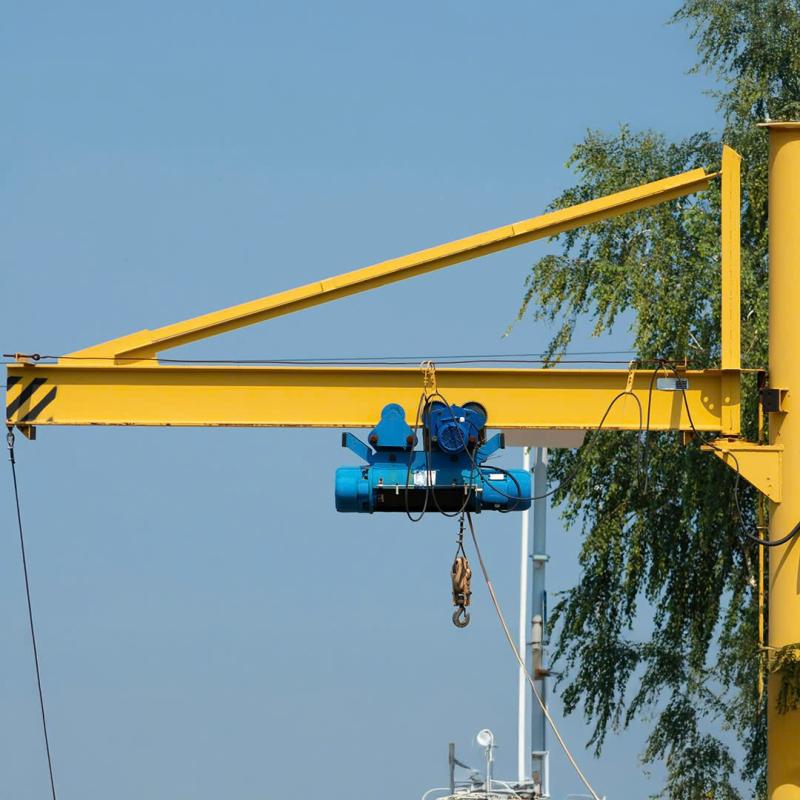



Deploying smart jib cranes requires careful planning, informed decision-making, and a structured approach to maximize benefits while minimizing operational disruptions. In today’s rapidly evolving industrial landscape, maximizing efficiency and ensuring safety are more important than ever.
In this comprehensive guide, we will explore how facility managers can strategically plan the deployment of smart jib cranes, from understanding basic concepts and specifications to successful implementation and ongoing management.
Explore precisely What is a smart Jib Crane to gain deeper insights into smart crane capabilities and features.
Before diving into deployment planning, it is crucial to understand why smart jib cranes are becoming essential tools in industrial and warehouse operations.
Smart jib cranes integrate automation technologies that enable precise, repeatable movements, significantly reducing operational errors and downtime. These cranes streamline workflows by automating routine tasks, enhancing overall productivity.
Safety is paramount in lifting operations. Smart jib cranes include intelligent safety systems such as overload sensors, automated limit switches, and emergency stop functionalities. These smart features reduce risks, protecting your workforce and assets.
Utilizing IoT technology, smart jib cranes facilitate real-time monitoring and predictive analytics. This predictive capability identifies potential issues before they escalate, optimizing crane performance and reducing unexpected downtime.
For a deeper understanding, explore our detailed guide: Understanding the Role of Jib Cranes in Smart Facilities.

Proper deployment planning ensures successful integration of smart jib cranes into your facility. The following structured approach outlines essential steps for smooth implementation:
Begin by thoroughly assessing your operational needs and the current lifting environment:
Evaluate the types of materials or products you routinely handle.
Identify precise lifting requirements, such as load weight, lifting height, and operational radius.
Consider spatial constraints, ceiling clearances, and floor conditions.
By clearly defining these factors, you set the foundation for selecting the right type of jib crane.
Selecting the correct jib crane type significantly impacts efficiency and effectiveness:
Freestanding Jib Crane: Offers full 360-degree rotation, ideal for expansive and open workspaces.
Wall-mounted Jib Crane: Perfect for facilities with limited floor space, mounted securely onto walls or structural supports.
Ceiling-mounted Jib Crane: Maximizes space efficiency by utilizing overhead mounting, leaving floor space unobstructed.
Articulating Jib Crane: Provides enhanced maneuverability in complex environments with obstacles, ideal for precise material positioning.
Pillar Jib Crane: Ideal for heavy-duty and stationary lifting applications requiring stability and reliability.
Gain deeper insights into Types of Smart Jib Cranes and Ideal Applications for optimal selection.
After selecting the appropriate crane type, detailed specifications should be considered to optimize performance:
Load Capacity: Ensure the crane can safely manage the maximum expected load.
Span and Height Under Boom: Match crane dimensions to your workspace for maximum coverage and clearance.
Rotation Capabilities: Determine the necessary rotation range based on workflow and spatial constraints.
Further details are available in Understanding Jib Crane Types and Their Core Specifications.
A critical part of deployment planning involves comparing jib cranes with alternative solutions such as overhead cranes. Understanding the differences helps confirm that jib cranes represent the best choice:
Space Usage: Jib cranes excel in space-constrained environments, whereas overhead cranes require substantial structural support.
Installation and Operational Costs: Jib cranes often offer lower initial and ongoing costs compared to larger overhead cranes.
Operational Flexibility: Jib cranes provide localized precision handling, making them superior for tasks requiring precise control and flexibility.
Explore this comparison further by reading Comparing Jib Cranes and Overhead Cranes.
Selecting smart features to incorporate into your jib cranes is crucial to future-proof your lifting solutions. Consider integrating:
Automated Control Systems: Enhance productivity with precise and repeatable crane movements.
Load Monitoring Systems: Utilize sensors to prevent overloading and ensure worker safety.
Real-time Data Analysis: IoT integration for remote monitoring, predictive maintenance, and enhanced performance management.
For practical guidance, review Steps to Smart Jib Crane Implementation.
Proper installation ensures safe and efficient crane performance. Key installation activities include:
Ensuring solid structural support, foundations, and proper anchoring.
Comprehensive alignment and leveling procedures.
Initial load testing and safety system verification.
Operational testing ensures that all systems are functional and ready for consistent use.
Adequate training ensures operators effectively use smart jib crane features. Include training programs covering:
Safe and correct operational practices.
Preventive maintenance routines.
Emergency procedures and safety feature utilization.
Master crane operation by exploring our guide: How to operate a smart jib crane.
Regular inspections and ongoing maintenance are critical to maintaining optimal crane performance and longevity. Implement a routine inspection schedule covering:
Structural integrity and mechanical systems.
Safety devices and controls.
Load testing and capacity verification.
Ensure safety through our detailed guide: Jib Crane Inspection Checklist to Ensure Safe Operations.

Strategically deploying smart jib cranes significantly enhances operational efficiency, productivity, and safety within your facility. By following a structured deployment plan, carefully selecting crane types and specifications, and integrating advanced technologies, you ensure a smooth transition to a smarter, safer lifting environment.
Take the next step towards future-proofing your operations. Start by understanding precisely What is a smart Jib Crane and leverage these innovative lifting solutions to transform your facility today.
1. How to operate a Jib Crane safely
3. Over brace jib crane wall mounted
5. Is a Jib Crane a Gantry Crane
6. Articulated Jib Crane Wall Mounted
8. Manual Counterbalance Crane
10. Over Braced Jib Crane Column Mounted
Sign up to receive the latest info on new Aardwolf products, special offers and more.
By signing up you agree to receive emails from Aardwolf with news, special offers, promotions and other information. You can unsubscribe at any time.